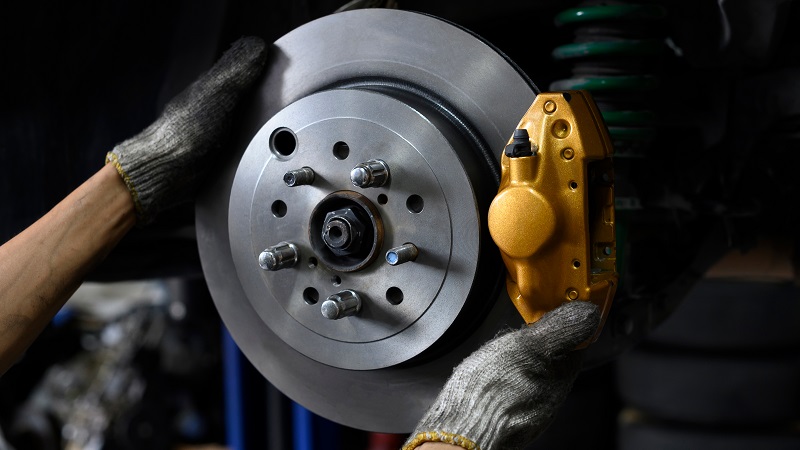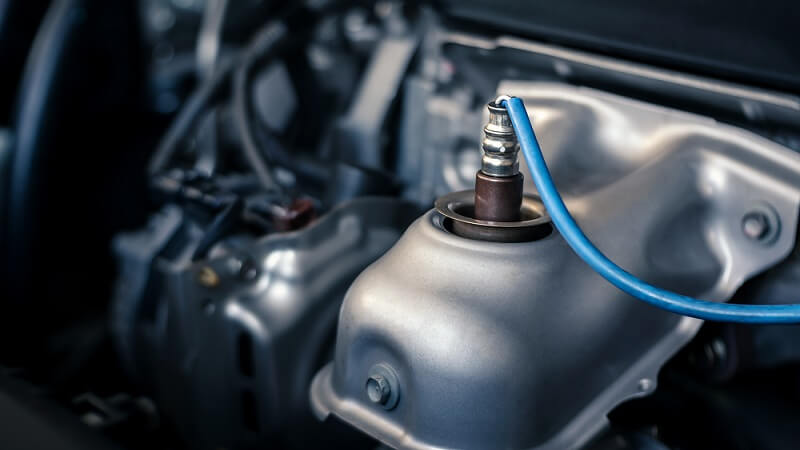Regular cars of today are as quick if not quicker than most performance-oriented machines from not too long ago. Brakes, as a result, are more important than ever. Luckily, along with the never-ending race for more horsepower in almost every car segment, there have also been developments in braking technology. Mandatory electronic safety systems like ABS and ESC have contributed significantly to making cars safer. While sensors play a big role in getting these life-saving features to work, they are still primarily dependent on your braking hardware.
After brake pads, brake discs are the quickest wearing part in this equation. It’s a component that you have probably dealt with already at some point, or will in the future. Here’s everything you need to know before swapping in your next set.

Article updated on 12/10/21. Original publishing date 03/10/21
Anatomy of a Brake Disc
Brake discs or rotors are one of the few components of a braking system that you can see from the outside. These exposed metal discs are positioned right behind the wheels and spin along with them when the car is on the move. When the brakes are applied, the calipers push the brake pads against the brake discs, causing friction and decelerating the vehicle. A brake disc is subjected to not only tremendous pressure, but large amounts of heat, which is a direct byproduct of friction.
Over the years, manufacturers have tried and tested different variations of brake discs, varying in sizes, materials, and forms. The bigger the better is usually the case when it comes to a brake disc. With a larger size comes improved leverage and more surface area for the brake pads to clamp down on. Larger discs are also more efficient when it comes to dissipating heat. The reason you don’t see large discs on every car is that they increase weight and are generally expensive. Since they are a wear time that you need to replace when you service your brakes, cost plays a major factor in brake rotor selection.
While it’s a common upgrade for enthusiasts, sticking to the factory specification will be more than enough for regular commuting. In most cases, cars have larger discs up front as that’s where most of the weight is located on modern vehicles.
Different Types of Brake Discs

Brake discs are divided into two main types – vented and solid. A vented brake disc is made up of two plates connected by a series of vanes. These vanes create a network of aerodynamic cavities which force air through the brake disc, thus ensuring efficient heat dissipation. Some discs also have patented vane designs that claim to improve heat dissipation beyond the industry norm. Vented brake discs are quite common nowadays, and can be found on most modern cars. They are significantly more efficient than solid brake discs in most scenarios.
Speaking of, solid brake discs can still be found as part of the rear brakes on some cars. Since the front brake discs handle the brunt of braking, solid rear discs get the job done in most cases. These basic rotors also help the manufacturer keep costs down while providing enough braking power for normal, everyday driving. Solid brake discs may not be as efficient as vented ones, but they often outperform drum brakes.
Both vented and solid brake discs are subdivided into three types – plain or smooth, drilled, and slotted brake discs.
Plain or Smooth
This is the simplest type of brake disc, and as its name suggests, it is just a plain disc. This type of disc features a smooth surface on both sides where the pads make contact. Its simple design is what makes it the most cost-efficient.
That being said, braking systems work by converting the kinetic energy of the moving vehicle into heat energy. And for consistent braking performance discs are required to dissipate large amounts of heat. With a plain or smooth disc, there are fewer ways in which it can lose heat and there’s also a chance of gas and dust building up between the pad and the rotor. However, these brake discs are the least prone to cracking. Smooth rotors are recommended for cars that aren’t undergoing extreme track use where hard braking is common and consistent.
Drilled Brake Discs
One way to improve braking performance on your car is to get drilled brake discs. This type of brake disc has holes drilled into key areas of its surface, which allow heat and gases to escape. A drilled brake disc also dissipates gases and heat directly to the interior cooling vanes, thus lowering the temperature of the braking surface much quicker.
It is also said that drilled brake discs perform better in wet conditions as it also gives water an escape route like it does with gases and dust. That being said, a drilled disc is not as structurally strong as a plain disc as the holes can become critical stress points after repetitive extreme braking cycles. However, they are built strong enough for use on the road.
Slotted Brake Discs
The functions of a slotted brake disc are similar to that of drilled ones. Instead of holes, it uses slots that allow gases, dirt, and moisture to escape. Thanks to this the surface of the disc and the pad remain clean. Slotted discs are also better at heat dissipation than plain or smooth ones, and are generally on par with drilled rotors.
The biggest advantage of slotted rotors over drilled rotors is the fact that the former are structurally more sound. This is also why slotted brake discs are used on professional race cars.
Brake Disc Materials

Another important aspect that distinguishes a brake disc is the material it is made of. Similar to the type of brake discs, each material works well in different roles. Here are three brake disc materials.
Cast Iron Brake Disc
This is a material that’s widely used as it’s easily available and quite affordable. The manufacturing process is also more straightforward with cast iron. Oftentimes, in regular conditions, iron is less prone to irregular wear from friction. You can check for these irregularities by checking the rotor thickness. As far as downsides go, cast iron brake discs are quite heavy and rust easier if the car sits unused.
Stainless Steel Brake Disc
Stainless steel brake discs, on the other hand, are less prone to corrosion and lighter as well. However, steel is more susceptible to warping from heat as the metal is more reactive to thermal expansion and contraction. Another drawback is that stainless steel brake discs are rather expensive.
Carbon Ceramic Brake Disc
Carbon ceramic brake discs are considered the most advanced ones out there. This brake disc material can handle significantly more heat than both iron and stainless steel. Needless to say, this makes it less prone to warping under extreme stress. Carbon-ceramic discs are most commonly found on high-performance cars where that extra edge in braking makes all the difference. That being said, their complex make-up also makes them extremely expensive.
How to Choose the Right Brake Disc For Your Car?

Before choosing between smooth, drilled, or slotted brake discs, you first need to figure out what you need your brakes to do. If the majority of your driving is just regular commuting, you won’t get to experience most of the benefits that slotted or drilled discs bring to the table. A set of plain rotors will be more than enough. Plus, if they’re ventilated, these brake discs will also be able to handle some spirited driving just fine.
A drilled brake disc is a good option if you intend on doing track days or dynamic driving on open roads. There’s also no denying that it gives the brakes a sporty appearance. That being said, these brake discs are still best suited for road-specific use only.
Slotted brake discs, meanwhile, will be your best option if you want to get the highest level of performance from your car. However, like with the drilled discs, the sharp edges of the slots will wear out brake pads much quicker than with smooth discs. It would also be quite difficult to justify the additional cost if you aren’t using the brakes to the limit.
At the end of the day, the choice is yours.
Only Use Quality Brake Discs!
While it’s wise to do your research and figure out exactly which type of brake discs you want, you should not delay swapping in new brake discs. Driving around with worn brake discs is extremely risky and a big no-no. If it’s your first time replacing a component of the braking system, it is recommended that you do it with guidance from someone with prior experience.
With that in mind, you can go ahead and order a new set of brake discs. Conveniently, we at Newparts.com offer a wide range of OEM parts for almost all European vehicles! All you need to do is visit our website, choose the make and model of your car, and you’ll get results based on your answers.





